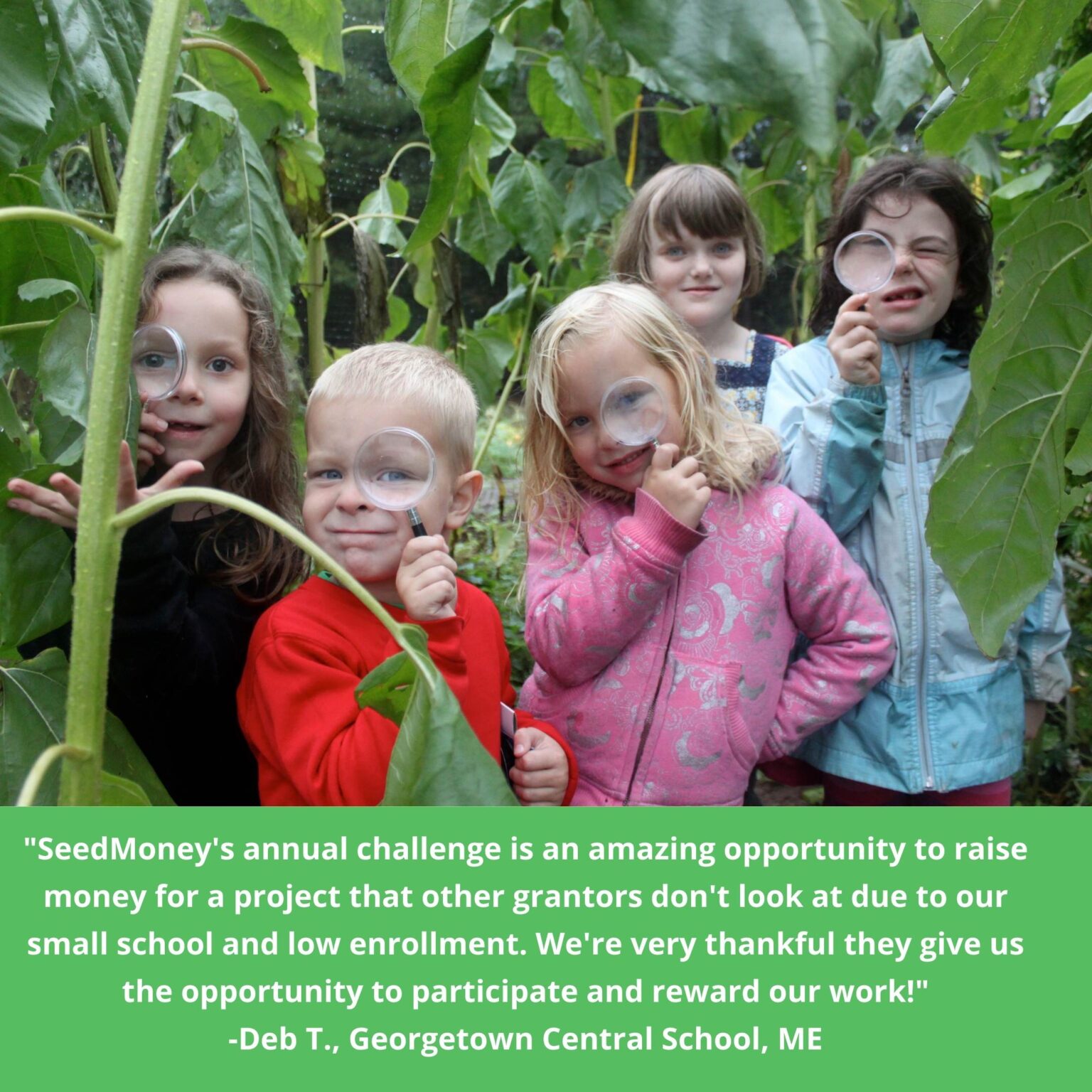The Benefits of School Gardens
Having a school garden provides children the opportunity to learn new skills, enjoy the outdoors, and benefit from local, healthy foods. School gardens are an excellent way to engage children outside the classroom while teaching them teamwork, responsibility, creativity, and nutrition. When starting a school garden there are many factors to consider, and getting started can feel daunting. The information below is designed to give you guidance on some of the aspects of starting your school garden.
Building Your Garden Team
In order for your school garden to be a success, it’s important to build a winning team of students, volunteers, teachers, administrators, and community members. It’s key to build a dedicated and diverse team of folks that are knowledgeable about gardening. With any school project, it’s imperative that your project has the support of the school administration, and that there is a clear objective and goals for the garden. How will the garden be used at the school? What purpose will the garden serve for the school? Asking questions like these can help you decide who should be on your garden team.
Picking a Site
Starting a school garden requires a few special considerations when deciding where to plant your seeds. When choosing your site you need to consider choosing a location where the plants can remain mostly undisturbed while growing. If the location of the garden will be a high foot-traffic area consider what steps need to be taken to educate students about being in the garden and how to handle the plants with care. Similarly, it’s also important to keep in mind where your nearest water, compost, and tool storage areas are when picking a plot so that when you garden you’re spending time in the dirt and not lugging supplies!
When choosing the size of your plot try to keep in mind what your goal is: integrating some of the produce into school meals or distributing food to families can lead to different needs and different sizes of plots depending on what your communities needs are.
For general information on picking a site please visit: https://seedmoney.org/home-garden-resources/.
Soil Health and Composting
No garden can flourish without healthy soil for the plants. Before you begin gardening take the time to collect soil samples to see what you are working with in your plot area. You can then collaborate with a local gardening store or Extension Service to see what crops will grow the best in your garden.
Composting can be a wonderful way to improve soil health and teach children about environmentally-conscious practices. There are a variety of ways to compost, but when working with children it’s best to keep the process simple so that you can quickly yield positive results. You can find more about composting with kids here: https://quiethut.com/composting-for-kids/ and a composting video for children can be found here: https://www.youtube.com/watch?v=dRXNo7Ieky8.
What to Plant
Now for the delicious part! Choosing what to plant in a school garden can be a tricky task when managing student expectations, varying palettes, and a wide variety of ages. If working with children of differing ages ask the children or vote on which plants to include in your garden. Make sure to include plants that are not poisonous, have weak limbs, or thorns. Plants chosen should also be resistant to diseases and pests, and able to grow well in your climate. In order to know what grows in your area, you can visit: http://planthardiness.ars.usda.gov/PHZMWeb/.
Involve your biology and science teachers by asking what plants the children have been learning about and putting their classroom knowledge to real-world use! Many community gardens are both popular and space-constrained. This means that most, if not all, of the plots in a given garden may already be in use. If this is the case, you have a few options.

Mapping and Designing Your Garden
Once you have decided what to plant it’s important to map out where each crop will go within your garden as well where each resource will be placed within your gardening area. Throughout this process be sure to involve the students, teachers, and other stakeholders in order to brainstorm many ideas. You can find more information on school garden design here: https://kidsgardening.org/designing-a-school-garden-designing-and-placing-the-garden/
Preparing the Students and Lesson Plans
Gardening can be a daunting task for many kids, some of whom will have had no exposure to gardening before your school garden. As you begin the process of starting your garden make sure to involve the children as much as possible and teach them about garden safety, plant-specific care instructions, and a variety of other topics you might need to discuss. You can find a sampling of lesson plans here to engage children with gardening: https://kidsgardening.org/lesson-plans/.
External Resources for School Gardening
- KidsGardening.org Educator Resources: https://kidsgardening.org/educator-resources/
- Obama White House School Garden checklist: https://letsmove.obamawhitehouse.archives.gov/school-garden-checklist
- Edible Schoolyard Resources: https://edibleschoolyard.org/resource-search


